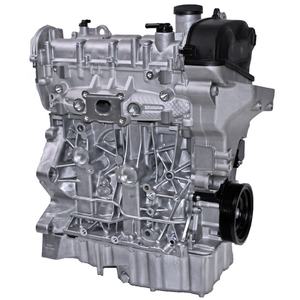Opel Corsa Engine: Top Tips for Maintenance and Treatment
Opel Corsa Engine: Top Tips for Maintenance and Treatment
Blog Article
Checking Out the Inner Functions of a Compact Vehicle's Engine System
As motorists, we frequently take for approved the elaborate procedures that occur within the boundaries of our lorry's engine system. In this exploration of a portable lorry's engine system, we will decipher the inner functions of this mechanical harmony, dropping light on the enigmas that drive us forward on our everyday trips.
Combustion Process Overview
The combustion process in a portable vehicle's engine system is an important mechanism that effectively transforms gas into energy to power the lorry. This process happens within the burning chamber of the engine, where gas and air mix, ignite, and create regulated explosions. The burning process includes 4 major phases: intake, exhaust, power, and compression.
During the consumption phase, the piston moves downward, drawing in a blend of air and gas into the burning chamber. This descending movement produces the power required to drive the lorry. This cyclic combustion process is essential to the operation of a portable car's engine system, making sure reliable power conversion for propulsion.
Piston and Cylinder Interaction

The piston's accurate fit within the cylinder is necessary for keeping optimum compression and preventing power loss throughout burning. Limited clearances in between the piston and cyndrical tube walls make sure effective sealing, enabling the piston to move smoothly without allowing gases to leak past. Correct lubrication is additionally essential to lower rubbing and use between these components, enhancing longevity and efficiency.
In addition, the style and materials used in manufacturing the piston and cyndrical tube impact engine performance and durability. Modern engines often use light-weight yet resilient materials like light weight aluminum alloys for pistons and cyndrical tube liners to lower inertia and boost thermal effectiveness. In general, the harmonious interaction in between the piston and cylinder is fundamental to the engine's performance and general efficiency.
Fuel Shot System Performance
Fuel shot systems in small lorry engines play a crucial role in specifically providing fuel to the combustion chamber for regulated and effective ignition. The gas injection system functions by injecting gas into the combustion chamber at the optimum moment during the engine's procedure (opel original site corsa engine). This precise timing makes certain that the fuel blends evenly with the air for proper combustion, causing improved fuel efficiency and lowered exhausts
There are mostly 2 types of fuel injection systems used in compact vehicle engines: port fuel shot (PFI) and straight gas injection (DFI) PFI systems inject gas right into the consumption port before the consumption shutoff, while DFI systems inject fuel directly into the burning chamber. Both systems have their benefits, with DFI providing better gas atomization and PFI supplying a much more cost-effective remedy.
Recognizing Engine Cooling Devices
Efficient procedure of a compact automobile's engine depends heavily on the performance of its cooling mechanisms. Engine cooling is vital to stop getting too hot, which can lead to serious damages and reduced efficiency. The air conditioning system in a portable vehicle typically contains numerous components functioning with each other to control the engine temperature. One critical part is the radiator, which utilizes coolant to take in warm from the engine. As the warm coolant flows via the radiator, it releases warm right into the air, cooling down before returning to the engine. The water pump flows the coolant via the engine and radiator, making certain a regular circulation to manage temperature level. Furthermore, the thermostat assists regulate the coolant circulation to preserve optimal engine temperature. Some cars likewise have cooling down fans that activate when extra air conditioning is required, such as during rush hour or heat. Understanding these engine air conditioning systems is essential for maintaining the efficiency and longevity of a compact lorry's engine system. find more info

Exhaust System Components Explained
The optimal functioning of a portable car's engine cooling devices depends on a complementary system recognized as the exhaust system, which comprises different vital components for making sure effective emissions and engine performance. The exhaust manifold accumulates exhaust gases from the engine's cylinders and courses them to the catalytic converter.
One important component of the exhaust system is the oxygen sensor, which keeps track of the oxygen levels in the exhaust gases to aid control gas intake and guarantee optimal engine efficiency. opel corsa engine. Furthermore, the resonator might exist in some exhaust systems to decrease sound degrees. On the whole, the exhaust system plays a vital role in keeping engine effectiveness, decreasing unsafe exhausts, and making certain a quieter driving experience for small car proprietors

Final Thought
Finally, the small lorry's engine system is an intricate mix of parts that collaborate to promote the burning process, convert fuel right into energy, and remove waste gases. Recognizing the inner operations of the engine system, consisting of the piston and cyndrical tube communication, fuel injection system, engine air conditioning devices, and exhaust system components, is essential for maintaining optimal performance and performance of the automobile.
The burning procedure in a small vehicle's engine system is an important mechanism that effectively converts gas right into energy to power the vehicle.Gas shot systems in small car engines play an essential role in specifically supplying gas to the burning chamber for efficient and the original source controlled ignition.There are mainly two types of gas injection systems made use of in small car engines: port gas injection (PFI) and direct fuel shot (DFI) Understanding these engine cooling mechanisms is crucial for maintaining the efficiency and long life of a compact car's engine system.
The optimal performance of a small car's engine air conditioning devices depends on a complementary system understood as the exhaust system, which comprises various crucial components for ensuring effective emissions and engine efficiency.
Report this page